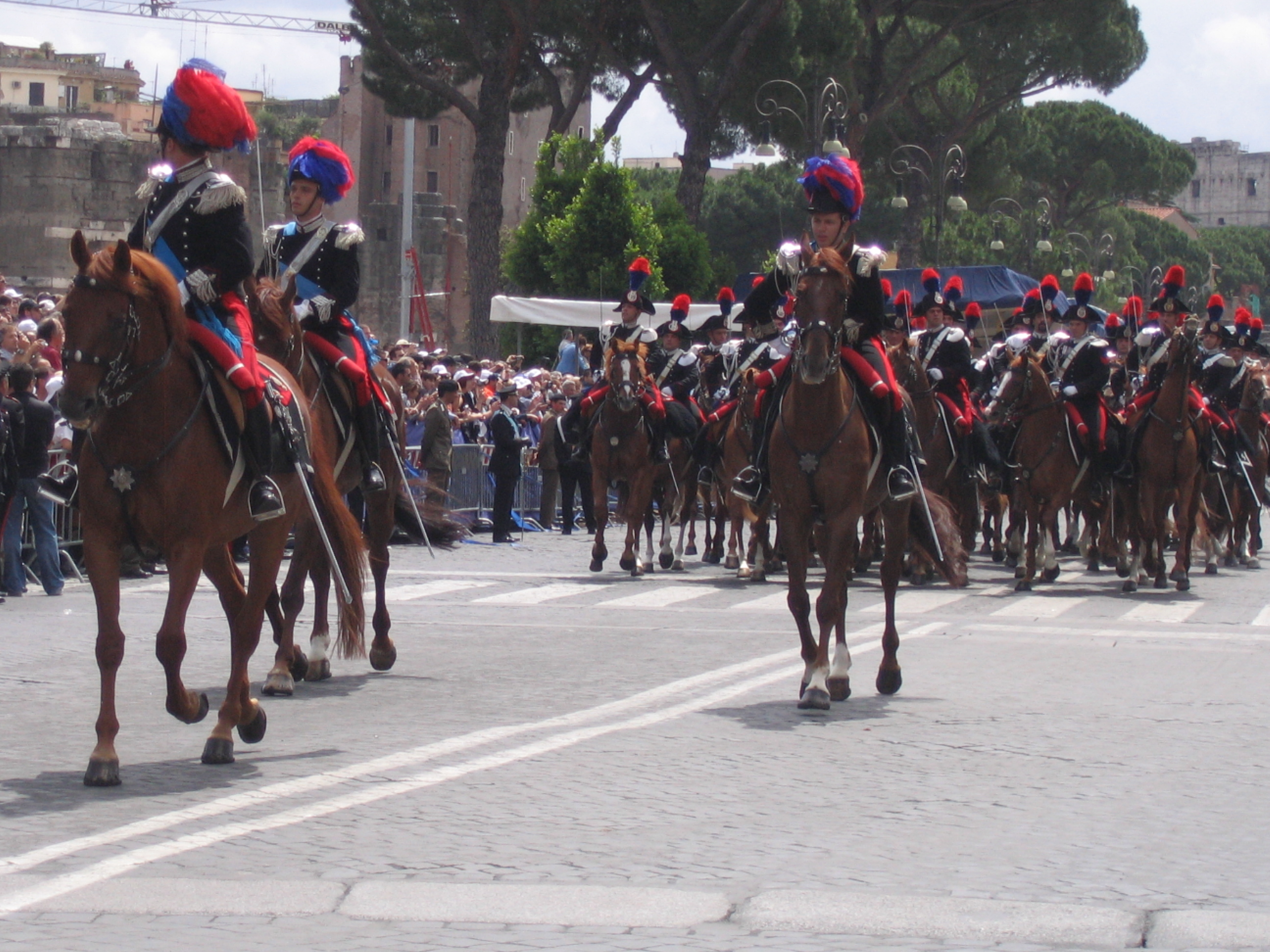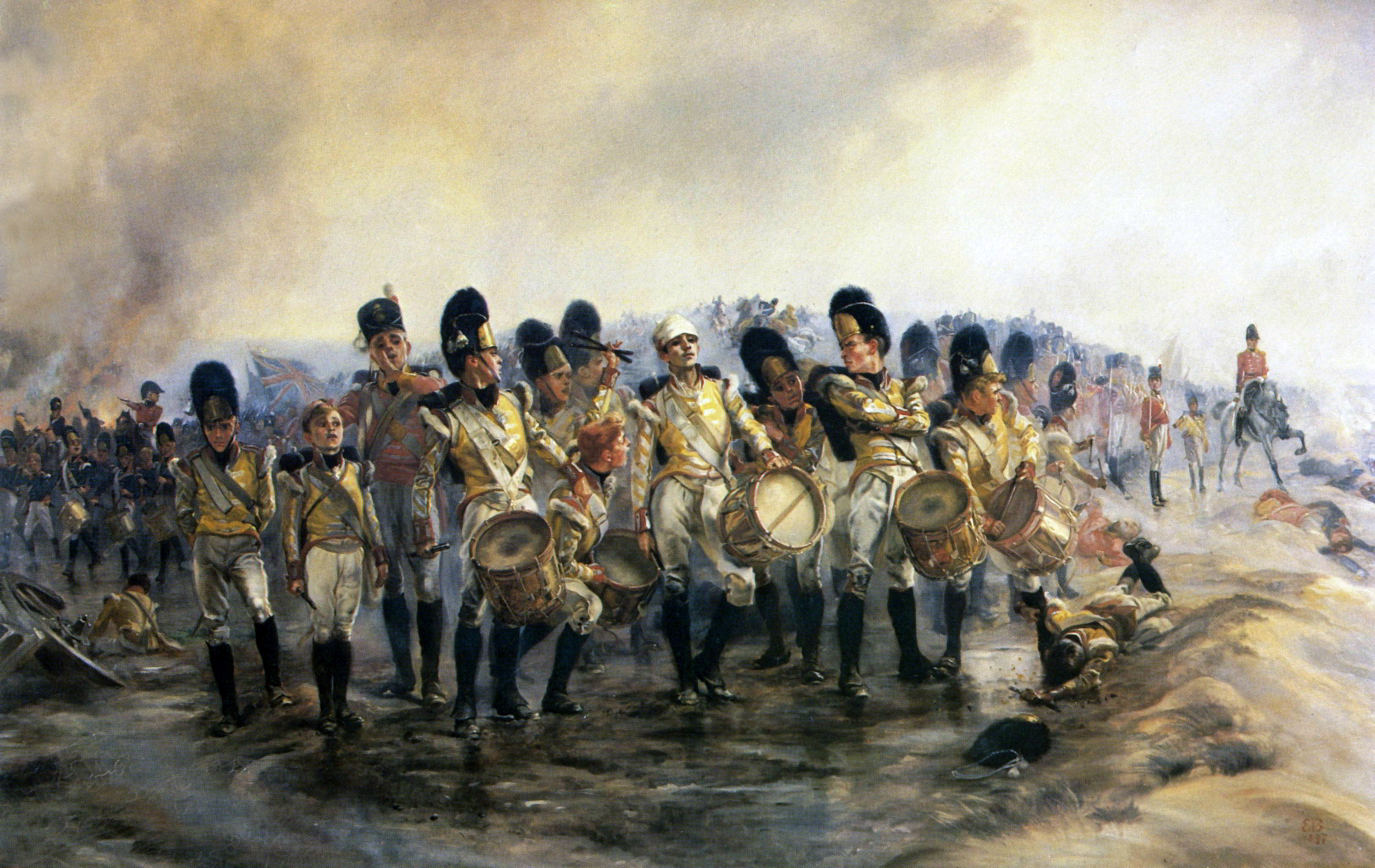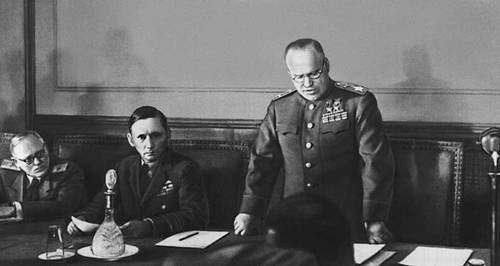|
Defense University Of Mongolia
The National Defense University (MNDU) is an accredited Mongolian military university located in Ulaanbaatar, Mongolia. Founded in 1921, it is the country's premier and oldest military educational institution. The NDU prepares officers and NCOs alike to have grounded leadership skills, physical and moral strength and a high military and civilian education. History It was established initially as the Commanders School of the Mongolian People's Army in September 1921 at the initiative of Damdin Sükhbaatar, who was a founding member of the Mongolian People's Party (MPP). The first leaders of the school was Soviet expert P. Mhalpinein and director L. Dzuzav, the Mongolian director. The NDU has since operated under the follow names: *Commanders School of the Mongolian People's Army (September 1921 – September 1923) *All-Arms General Military School (September 1923 – May 1932) *General Military Higher School (May 1932 – June 1967) *Combined Military Higher School (1967–1991) ... [...More Info...] [...Related Items...] OR: [Wikipedia] [Google] [Baidu] |
Military Academy
A military academy or service academy is an educational institution which prepares candidates for service in the officer corps. It normally provides education in a military environment, the exact definition depending on the country concerned. Three types of academy exist: pre-collegiate-level institutions awarding academic qualifications, university-level institutions awarding bachelor's-degree-level qualifications, and those preparing Officer Cadets for commissioning into the armed services of the state. A naval academy is either a type of military academy (in the broad sense of that term) or is distinguished from one (in the narrow sense). In U.S. usage, the Military, Naval, Coast Guard, and the Air Force Academy serve as military academies under the categorization of service academies in that country. History The first military academies were established in the 18th century to provide future officers for technically specialized corps, such as military engineers and art ... [...More Info...] [...Related Items...] OR: [Wikipedia] [Google] [Baidu] |
Military Music College Of Mongolia
The Military Music College of Mongolia is a military music institution in the Mongolian National Defense University. It is designed to prepare cadets to become professional musicians for art organizations in the Armed Forces of Mongolia, such as the Mongolian Military Song and Dance Academic Ensemble. It was founded in 1991 by the Ministry of Defense following the fall of communism in Mongolia. The school is made up of three notable educational groups: * Military Brass Band * Corps of Drums * Choir The brass band participates in national and cultural musical events, such as the Mongolian State Flag Day Parade on Sükhbaatar Square, to which it plays an important role. Graduates of the college take part in festivals of brass bands, which are commonly held in South Korea, Germany, Great Britain and Russia. The whole college acts as a military unit the size of a battalion and is included during joint performances with other Mongolian military bands. Overview It descends from a ... [...More Info...] [...Related Items...] OR: [Wikipedia] [Google] [Baidu] |
Military Parade
A military parade is a formation of soldiers whose movement is restricted by close-order manoeuvering known as drilling or marching. The military parade is now almost entirely ceremonial, though soldiers from time immemorial up until the late 19th century fought in formation. Massed parades may also hold a role for propaganda purposes, being used to exhibit the apparent military strength of a country. History The terminology comes from the tradition of close order formation combat, in which soldiers were held in very strict formations as to maximise their combat effectiveness. Formation combat was used as an alternative to mêlée combat, and required strict discipline in the ranks and competent officers. As long as their formations could be maintained, regular troops could maintain a significant advantage over less organised opponents. Nevertheless, military parades are not to be confused with the military show of force. Although the firepower of breechloading rifles and ... [...More Info...] [...Related Items...] OR: [Wikipedia] [Google] [Baidu] |
Mongolian State Flag Day
State Flag Day ( mn, Төрийн далбааны өдөр) is the main state holiday in Mongolia, being celebrated annually on July 10. State Flag Day is celebrated with a central government-sponsored events including a military parade and a flag raising ceremony on Sükhbaatar Square in the capital of Ulaanbaatar. History Previous celebrations on 10 July The first official military parade in Communist Mongolia (Mongolian People's Republic) took place in 1921 in honor of the victories of Damdin Sükhbaatar in the People's Revolution. The anniversary parades that followed have been held on jubilee years, examples of which include the parades in 1966, 1981, and 1991 which celebrated the 45th anniversary, the 60th anniversary and the 70th anniversary respectively. After 1991, the practice was abandoned with the exception of 1996 when a parade in the National Sports Stadium commemorated the 790th anniversary of the founding of Mongolia and the 75th anniversary of the People's Revo ... [...More Info...] [...Related Items...] OR: [Wikipedia] [Google] [Baidu] |
Corps Of Drums
A Corps of Drums, also sometimes known as a Fife and Drum Corps, Fifes and Drums or simply Drums is a unit of several national armies. Drummers were originally established in European armies to act as signallers. The major historical distinction between a military band and a corps of drums, was that 'drummers' were not employed to play their instruments to entertain or delight, but rather they carried out a utilitarian battlefield role. This role was fulfilled by trumpeters or buglers in the cavalry and the artillery, who did not form into comparative formed bodies in the way that drummers did; therefore, an orthodox corps of drums will exist in the infantry arm. History Instruments, particularly drums, have been used on battlefields as signalling devices since time immemorial across many different cultures. Most fife and drum traditions trace back to the Swiss mercenaries of the early Renaissance, and it is known that by the early 16th century, each company of infantry ... [...More Info...] [...Related Items...] OR: [Wikipedia] [Google] [Baidu] |
Color Guard
In Military, military organizations, a colour guard (or color guard) is a detachment of soldiers assigned to the protection of Colours, standards and guidons, regimental colours and the national flag. This duty is so prestigious that the military colour is generally carried by a young officer (Ensign (rank), Ensign), while experienced non-commissioned officers (colour sergeants) are assigned to the protection of the national flag. These NCOs, accompanied sometimes by warrant officers (as is the case in several countries), can be ceremonially armed with either sabres or rifles to protect the colour. Colour guards are generally dismounted, but there are also mounted colour guard formations as well. History As armies became trained and adopted set formations, each regiment's ability to keep its formation was potentially critical to its and therefore its army's success. In the chaos of battle, not least due to the amount of dust and smoke on a battlefield, soldiers needed to be abl ... [...More Info...] [...Related Items...] OR: [Wikipedia] [Google] [Baidu] |
Order Of Sukhbaatar
The Order of Sukhbaatar (or Order of Suche Bator) is a state decoration of Mongolia, originally instituted on 16 May 1941. It was awarded to Mongolians and foreigners "for special services to defenses, economic and cultural construction of the Mongolian People's Republic, and also for acts of heroism in the struggle against external and internal enemies". It was named after the Mongolian national hero, Damdin Sükhbaatar. It is still conferred today and has been the highest state order since 1992, awarded by the decree of the President of Mongolia. Order description This medal is worn on the left side of the brooch before or at the beginning of other medals. He is also awarded the title of Hero of Mongolia and Hero of Labor. The number of awards with the order, according to Herfurt, is 1700. Recipients of the Order received a number of civic privileges. Those awarded with the order have the right to free visits to museums, exhibitions, lectures, reports and all other cultural an ... [...More Info...] [...Related Items...] OR: [Wikipedia] [Google] [Baidu] |
Victory Day (9 May)
etc. , nickname = , observedby = Russia and some former states of Soviet Union and Warsaw Pact; Serbia, Israel , duration = 1 day , frequency = Annual , date = 9 May , scheduling = same day each year , celebrations = , observances = , relatedto = Victory in Europe Day Victory Day russian: День Победы, Den' Pobedy uk, День Перемоги, Den' Peremohy be, Дзень Перамогі, Dzień Pieramohi uz, Gʻalaba kuni, Ғалаба куни kk, Jeñis Küni, Жеңіс Күні ka, გამარჯვების დღე, gamarjvebis dghe az, Qələbə Günü, Гәләбә Ҝүнү ro, Ziua Victoriei (Moldovan Cyrillic: Зиуа Викторией) ky, Жеңиш майрамы, Jengish Mayramy tg, Рӯзи Ғалаба, Rūzi Ghalaba hy, Հաղթանակի օրը, Haght'anaki ory tm, Ýeňişlar Harçlaarsiň, Еңишлар Харчлаарсиң is a holiday that commemorates the Soviet victory over Nazi Ge ... [...More Info...] [...Related Items...] OR: [Wikipedia] [Google] [Baidu] |
Irkutsk Oblast
Irkutsk Oblast (russian: Ирку́тская о́бласть, Irkutskaya oblast; bua, Эрхүү можо, Erkhüü mojo) is a federal subject of Russia (an oblast), located in southeastern Siberia in the basins of the Angara, Lena, and Nizhnyaya Tunguska Rivers. The administrative center is the city of Irkutsk. It borders the Republic of Buryatia and the Tuva Republic in the south and southwest, which separate it from Khövsgöl Province in Mongolia; Krasnoyarsk Krai in the west; the Sakha Republic in the northeast; and Zabaykalsky Krai in the east. It had a population of 2,428,750 at the 2010 Census. Geography Irkutsk Oblast borders with the Republic of Buryatia and the Tuva Republic in the south and southwest, with Krasnoyarsk Krai in the west, with the Sakha Republic in the northeast, and with Zabaykalsky Krai in the east. The unique and world-famous Lake Baikal is located in the southeast of the region. It is drained by the Angara, which flows north across t ... [...More Info...] [...Related Items...] OR: [Wikipedia] [Google] [Baidu] |
Angarsk
Angarsk ( rus, Ангарск, p=ɐnˈgarsk) is a city and the administrative center of Angarsky District of Irkutsk Oblast, Russia, located on the Kitoy River, from Irkutsk, the administrative center of the oblast. Population: History It was founded in 1948''The New Encyclopædia Britannica''. Entry on Angarsk. Chicago: Encyclopædia Britannica, Inc., 15th edn., 1992, Vol. 1, p. 399. as an industrial community and was granted city status on May 30, 1951. Administrative and municipal status Within the framework of administrative divisions, Angarsk serves as the administrative center of Angarsky District,Law #49-OZ to which it is directly subordinated.''Registry of the Administrative-Territorial Formations of Irkutsk Oblast'' As a municipal division, the city of Angarsk and thirteen rural localities of Angarsky District are incorporated as Angarskoye Urban Okrug.Law #149-OZ Local government As a result of the elections of December 2, 2007, Leonid G. Mikha ... [...More Info...] [...Related Items...] OR: [Wikipedia] [Google] [Baidu] |
Bulgaria
Bulgaria (; bg, България, Bǎlgariya), officially the Republic of Bulgaria,, ) is a country in Southeast Europe. It is situated on the eastern flank of the Balkans, and is bordered by Romania to the north, Serbia and North Macedonia to the west, Greece and Turkey to the south, and the Black Sea to the east. Bulgaria covers a territory of , and is the sixteenth-largest country in Europe. Sofia is the nation's capital and largest city; other major cities are Plovdiv, Varna and Burgas. One of the earliest societies in the lands of modern-day Bulgaria was the Neolithic Karanovo culture, which dates back to 6,500 BC. In the 6th to 3rd century BC the region was a battleground for ancient Thracians, Persians, Celts and Macedonians; stability came when the Roman Empire conquered the region in AD 45. After the Roman state splintered, tribal invasions in the region resumed. Around the 6th century, these territories were settled by the early Slavs. The Bulgars, led by Asp ... [...More Info...] [...Related Items...] OR: [Wikipedia] [Google] [Baidu] |
Russia
Russia (, , ), or the Russian Federation, is a List of transcontinental countries, transcontinental country spanning Eastern Europe and North Asia, Northern Asia. It is the List of countries and dependencies by area, largest country in the world, with its internationally recognised territory covering , and encompassing one-eighth of Earth's inhabitable landmass. Russia extends across Time in Russia, eleven time zones and shares Borders of Russia, land boundaries with fourteen countries, more than List of countries and territories by land borders, any other country but China. It is the List of countries and dependencies by population, world's ninth-most populous country and List of European countries by population, Europe's most populous country, with a population of 146 million people. The country's capital and List of cities and towns in Russia by population, largest city is Moscow, the List of European cities by population within city limits, largest city entirely within E ... [...More Info...] [...Related Items...] OR: [Wikipedia] [Google] [Baidu] |




%2C_1910-12.jpg)


